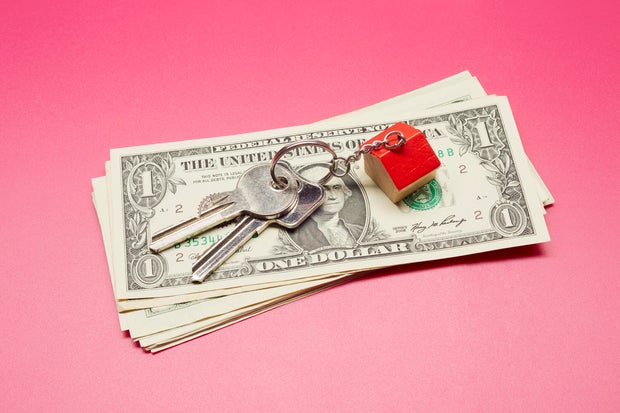the_burtons/Getty Images
The home equity lending landscape is looking increasingly attractive for homeowners right now. Following the Federal Reserve’s late October rate cut, in which the Fed dropped its benchmark rate by 25 basis points, home equity loan rates have fallen to the lowest levels we’ve seen since early 2023, with the average home equity rate now sitting at just 8.02% for shorter-term loans. This decline represents a meaningful shift for homeowners who’ve been waiting for the right moment to tap into their equity.
And the timing couldn’t be better for many households. With the average homeowner now holding over $300,000 in equity, a record high, there’s substantial borrowing power available for those who need it. Whether you’re consolidating high-rate debt, funding a home renovation or covering major expenses, a $50,000 home equity loan has become a much more accessible option.
But since your home serves as collateral on these loans, understanding exactly what you’ll pay each month is essential before moving forward. So, how much can you expect to pay each month on a $50,000 home equity loan at today’s rates?\
Find out how affordable the right home equity borrowing option could be now.
Here’s how much a $50,000 home equity loan can cost per month after the Fed’s October rate cut
Home equity loans are fixed-rate products, meaning the interest rate and monthly payment remain the same for the entire term. To help you get an idea of what your payments could look like with this borrowing option, here’s what the monthly principal and interest payments on a $50,000 home equity loan would be at today’s average rates for two common repayment terms:
- 10-year home equity loan at 8.21%: $612.20 per month
- 15-year home equity loan at 8.10%: $480.72 per month
To compare, here’s where things stood just after the Fed’s September 2025 rate reduction (before the October cut brought rates down a bit more). At that point, average home equity loan rates were slightly higher, and your monthly home equity loan payments on a loan in the same amount would have been the following:
- 10-year home equity loan at 8.43%: $618.06 per month
- 15-year home equity loan at 8.31%: $486.82 per month
Back in February 2025, before the Fed had issued any rate cuts at all, home equity loan rates were even higher. Using the average rates from that period, here’s what the monthly payments on a $50,000 home equity loan would have looked like:
- 10-year home equity loan at 8.57%: $621.80 per month
- 15-year home equity loan at 8.52%: $492.96 per month
In other words, the recent Fed rate drops weren’t substantial, but they still resulted in meaningful progress for homeowners who want to tap into their home equity, especially for those dealing with a tight budget. But it’s important to remember that these rates are just the averages.
The actual rate you secure on a home equity loan will depend on a wide range of factors, from the lender you choose to the amount of your home equity to your credit score and overall borrower profile. So, make sure to do your homework and find the right option for your needs and your financial situation before borrowing any money.
Explore the home equity loan and HELOC rates you could qualify for here.
How much does a $50,000 HELOC cost monthly after the Fed’s October rate cut?
A home equity line of credit (HELOC) works differently from a loan. Rather than securing a lump sum, borrowers get access to a line of credit that they can draw funds from as needed during the set draw period, which typically lasts 10 years. Payments during that time are often interest-only, which makes initial monthly costs lower but can lead to higher payments later.
As of late October 2025, average HELOC rates have fallen slightly due to the Fed’s latest move and are now sitting around 7.90% for both 10- and 15-year HELOC terms. Here’s what you could expect to pay each month on a $50,000 HELOC at today’s rates (assuming rates stay the same over time):
- 10-year HELOC at 7.90%: $604.00 per month
- 15-year HELOC at 7.90%: $474.94 per month
Because many HELOCs only require interest payments during the draw period, some borrowers may initially pay far less. But once the repayment phase begins, HELOC payments rise sharply as principal repayment kicks in. If you opt for a HELOC, it’s important to plan ahead for those future costs and any potential rate fluctuations that occur. Even with lower initial payments, the variable-rate structure means your rate and monthly bill can change over time. That’s especially relevant as markets price in potential future Fed moves.
Still, HELOCs offer flexibility that traditional loans don’t. If you don’t need the full $50,000 right away, you can borrow only what’s necessary, reducing your total interest costs. They’re also ideal for ongoing projects or emergencies that arise intermittently rather than all at once.
The bottom line
The Fed’s October rate cut provided some relief for borrowers, but home equity loans and HELOCs remain expensive by historical standards. On a $50,000 balance, you’re likely looking at payments between about $475 and $622 per month, depending on the product and term. That’s still far cheaper than carrying the same balance on a credit card at 22% or higher, but it’s not a decision to make lightly.
Borrowing against your home introduces risk, after all, and if payments become unmanageable, you could put your property at stake. Working with a reputable lender or debt relief expert can help you determine whether tapping your home’s equity makes sense or whether it’s smarter to explore other financing strategies while rates continue to adjust.




0 Comments